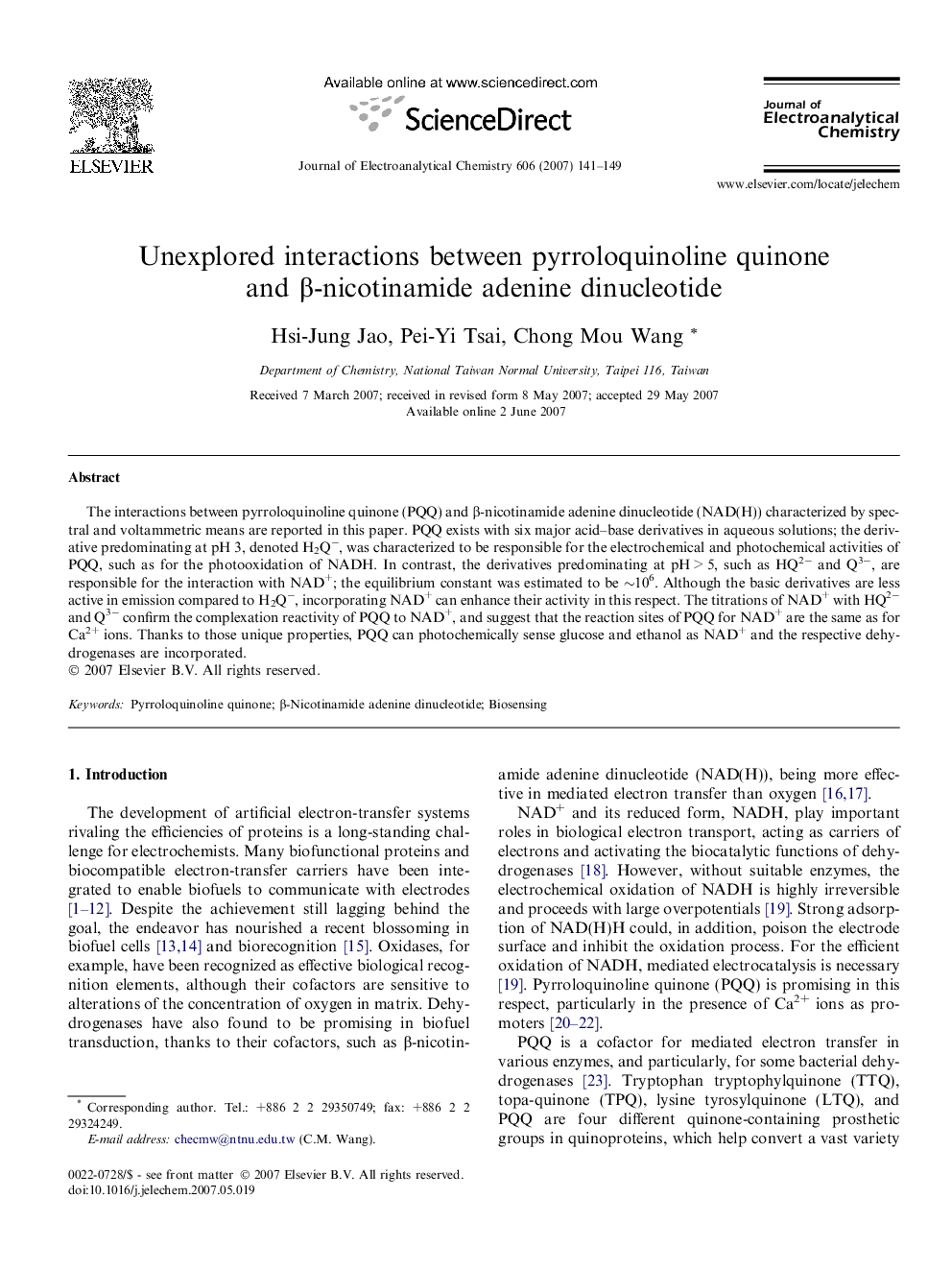| Article ID | Journal | Published Year | Pages | File Type |
|---|---|---|---|---|
| 220989 | Journal of Electroanalytical Chemistry | 2007 | 9 Pages |
The interactions between pyrroloquinoline quinone (PQQ) and β-nicotinamide adenine dinucleotide (NAD(H)) characterized by spectral and voltammetric means are reported in this paper. PQQ exists with six major acid–base derivatives in aqueous solutions; the derivative predominating at pH 3, denoted H2Q−, was characterized to be responsible for the electrochemical and photochemical activities of PQQ, such as for the photooxidation of NADH. In contrast, the derivatives predominating at pH > 5, such as HQ2− and Q3−, are responsible for the interaction with NAD+; the equilibrium constant was estimated to be ∼106. Although the basic derivatives are less active in emission compared to H2Q−, incorporating NAD+ can enhance their activity in this respect. The titrations of NAD+ with HQ2− and Q3− confirm the complexation reactivity of PQQ to NAD+, and suggest that the reaction sites of PQQ for NAD+ are the same as for Ca2+ ions. Thanks to those unique properties, PQQ can photochemically sense glucose and ethanol as NAD+ and the respective dehydrogenases are incorporated.
